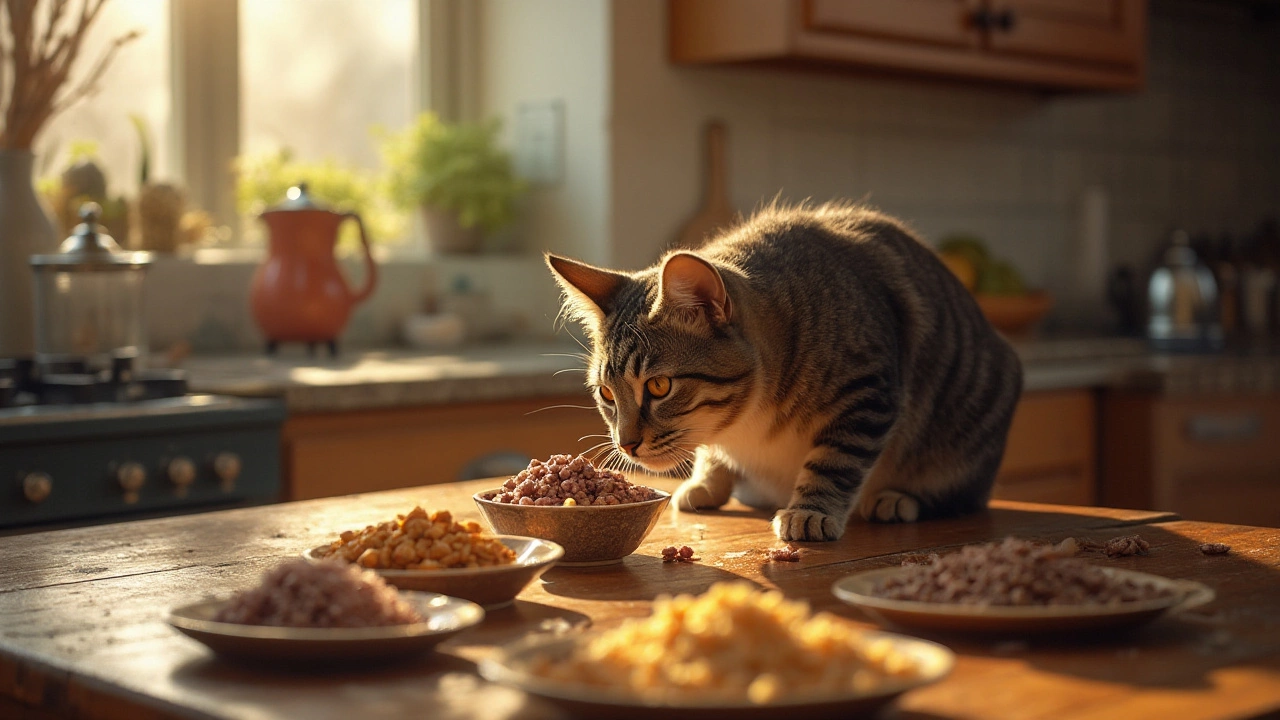Cat Feeding Habits: What Every Cat Owner Should Know
If you’ve ever wondered why your kitty paws at the bowl at odd hours, the answer is usually simple – cats have unique feeding habits that differ from dogs or humans. Understanding those habits helps you avoid overfeeding, keep your cat at a healthy weight, and make mealtime a stress‑free part of the day.
How Often Should Cats Eat?
Most adult cats do best with two meals a day, spaced about 8‑12 hours apart. This schedule mimics their natural hunting pattern: a big catch in the morning and another in the evening. Kittens, on the other hand, need three to four smaller meals because their bodies are still growing fast.
When you’re busy, an automatic feeder can keep the timing consistent. Just be sure to set the portions correctly – the feeder won’t know if your cat is a couch potato or an active jumper.
Portion Sizes and Food Types
Portion control depends on three things: your cat’s weight, activity level, and the calorie count of the food you choose. Check the label for calories per cup and use a kitchen scale for accuracy. A typical 4‑kg indoor cat needs about 180‑200 calories daily.
Wet food provides extra moisture, which is great if your cat doesn’t drink much water. Dry kibble is convenient and helps keep teeth clean, but it can be calorie‑dense, so measure carefully. A mix of both works for many owners – serve a small spoonful of wet food with a measured scoop of dry.
Treats should be less than 10% of total calories. Pick treats that list real meat first and avoid those with fillers like corn or wheat. If you’re using freeze‑dried snacks, count them as part of the daily calorie budget.
Watch for signs your cat is eating too much or too little. A cat that’s gaining a pound a month may need a smaller portion or a low‑calorie formula. Conversely, a cat that’s losing weight or seems hungry all the time might need a higher‑calorie food or an extra snack.
Adjust portions when life changes: after surgery, during pregnancy, or when a senior cat slows down. Your vet can help you calculate the right amount for each stage.
Fresh water is a must. Even if you feed wet food, keep a bowl of clean water nearby. Some cats prefer running water, so a pet fountain can encourage drinking.
Finally, keep the feeding area calm. Cats are sensitive to noise and movement, so a quiet spot away from high‑traffic areas helps them eat at a relaxed pace.
By paying attention to meal timing, portion sizes, and the type of food you offer, you’ll support your cat’s natural instincts and keep them in top shape. Stick to these simple habits, and you’ll see a happier, healthier feline who enjoys every bite.

Do Cats Get Tired of the Same Food Daily?
Cats are creatures of habit, but do these curious felines ever find themselves uninterested in their meals? Exploring whether cats get bored of eating the same food every day, this article delves into the intricacies of feline dietary preferences. While some cats relish a routine, others might crave variety due to nutritional needs or sensory stimulation. Understanding these factors can help pet owners make informed decisions about their cat's diet.
View more